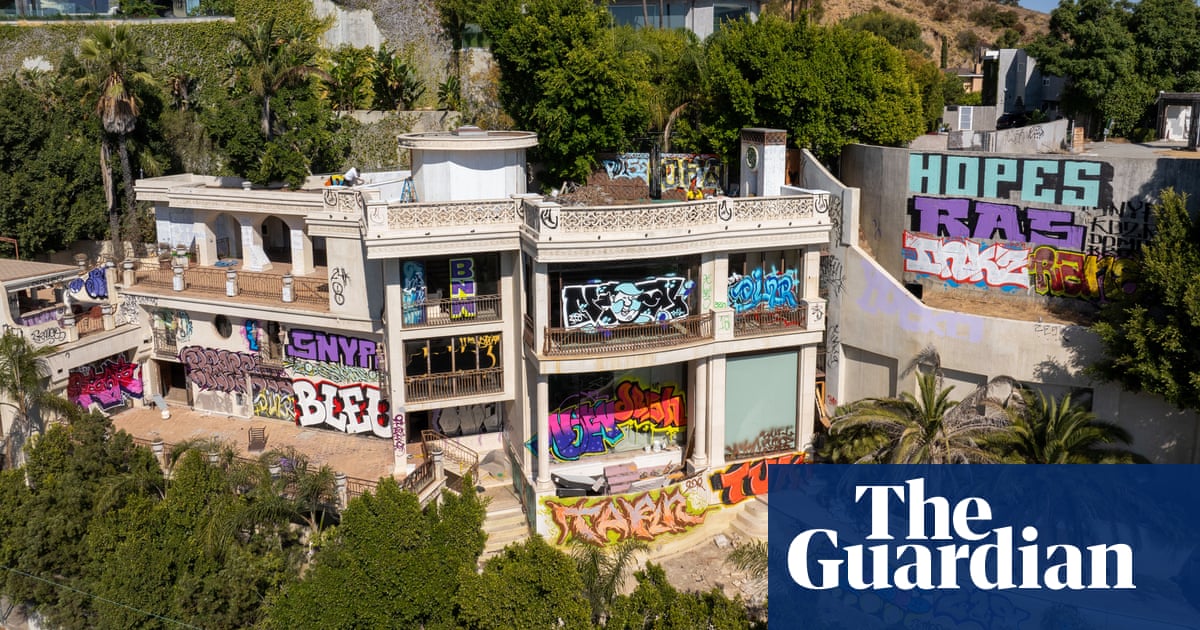Heating the UK’s 28m homes creates almost a fifth of the country’s greenhouse gas emissions, so after decades of relying on gas and oil boilers, households will need to break their addiction to fossil fuels if the government hopes to meet its climate targets.
For most homes, the alternative to traditional heating systems is likely to be an electric air source heat pump.
This little-understood technology has divided opinion. There are those who believe heat pumps could play a vital role in climate action, and then there are the sceptics who claim their benefits are a lot of hot air. In between are millions of people with little clear information to hand, and some high-stakes financial decisions ahead of them.
The “heat pump revolution” is gathering pace: last month it emerged that the UK had passed the milestone of 250,000 certified heat pump installations, with 2024 said to be on track to be “a record-breaking year”. This week (23–29 September) is Heat Pump Week, and the technology also received a boost at the Labour party conference on Monday when the energy secretary, Ed Miliband, announced a “home upgrade revolution” aimed at making the country’s housing stock cleaner and cheaper to run.
An air source heat pump looks like a large air conditioning unit and works like a fridge in reverse: it captures heat from air and uses refrigerant gas and a compressor to raise the temperature enough to heat the water which flows through our home radiators. You can read more about exactly how a heat pump works here.
The Guardian has investigated the leading claims, counter-claims and grey areas to separate myth from reality.
Claim: Heat pumps are more expensive to run than gas boilers
Heat pumps are expensive. In the UK, the majority of homes are expected to opt for an air-source heat pump, which costs on average just over £12,500 to buy and install – four to five times the cost of a gas boiler.
To help bridge the gap, the government offers grants of £7,500 to households through its boiler upgrade scheme. But critics have said that even with the grants, households could face higher energy bills because in the UK the electricity used to run them costs roughly four times the price of gas.
So what does the research say? Experts have found that, on average, heat pumps are far more efficient than gas boilers, turning one unit of electricity into 2.5 to five units of heat. By contrast, a gas boiler often produces 0.9 to 0.95 units of heat for each gas unit because some heat is lost through the flue pipes.
The technical measure for this efficiency is known as the seasonal coefficient of performance (Scop), and any heat pump with a Scop of more than 3 will match the running costs of an 85% efficient gas boiler, according to research.
A study of 750 households by Energy Systems Catapult, an independent government-backed researcher, found that heat pumps typically have a Scop of 2.9, meaning they would cost slightly more than a gas boiler to run. A separate study by the Energy Saving Trust, an independent advisory group, put the cost at £14 a year more than using a new A-rated gas boiler.
There’s no need to settle for higher bills, though. Research has also shown that a new breed of energy tariff designed specifically for heat pump users could tip the balance in their favour. Octopus Energy and Ovo Energy have both released cheaper-than-average tariffs tailored for heat pumps, which would make one cheaper to run than a gas boiler even with a Scop score well below 2.9.
Claim: Heat pumps don’t work at freezing temperatures
Heat pumps are installed in two-thirds of homes in Norway, where the average winter temperature is -7C, but this hasn’t cooled fears in the UK that they would be unable to warm homes through Britain’s relatively mild winters.
In fact, a survey of more than 4,000 adults across the UK, Germany, France and the US last autumn, undertaken by the data company Electrify Research, found that more than 40% of Britons agreed that heat pumps are not up to the challenge, compared with 36% in Germany, 35% in the US and 26% in France.
But real-world data disproves these fears. In the study by Energy Systems Catapult mentioned above, the government-funded demonstration project analysed the performance of 750 heat pumps over a period of two years on some of the country’s coldest days, where mean daily temperatures fell to as low as -6C.
The study found that heat pumps needed to work harder in cold temperatures, but they still performed well. During periods when the temperature dipped to -6C, the efficiency rating fell from an average of about 2.9 to 2.44, meaning that the running costs would rise to just above those of a gas boiler, but only for these periods.
The science shows that heat pumps can work at winter temperatures. But poor advice and installation can upend even the most encouraging scientific findings. Richard Halsey, a director at ESC, said: “One of the key findings from our study is that proper design and installation is at the heart of delivering a heat pump that works for the home that it’s in.”
Claim: Heat pumps cannot be installed in older properties
The belief that heat pumps only work effectively in modern buildings has fuelled concerns that Britain’s large stock of Victorian and pre-second world war homes will scupper the government’s aim to install 600,000 a year by 2028.
A report commissioned in 2021 by the Energy and Utilities Alliance (EUA), a trade body that represents gas boiler manufacturers, in partnership with four gas network companies, said heat pumps would be impractical for up to 54% of British households who were using gas to heat their homes.
Again, the real-world experience proves this wrong. There will be some homes which won’t be suitable for a heat pump – such as high-rise blocks without any outdoor space – but the majority of households are expected to be able to use one, according to experts.
The two-year study mentioned earlier included homes across the country – from south-east Scotland and Newcastle to the south-east of England – to test the technical and practical feasibility of a large-scale rollout of heat pumps into existing homes. It found that properties including Victorian terrace houses and 1960s flats could have a heat pump successfully installed.
“The project has not identified any particular type or age of property that cannot have a successful heat pump installation,” the ESC report said. “The suggestion that there are particular home archetypes in Britain that are unsuitable for heat pumps is not supported by project experience and data.”
There are caveats: flats or terrace homes with limited outdoor space may need to consider wall-mounted or rooftop heat pumps. For all housing types, there will need to be space inside for a hot water tank, often where the old boiler used to be. And for older buildings, other upgrades – such as loft and wall insulation, or the replacement of old radiators with larger models and underfloor heating – may be needed.
Claim: I will need to spend a lot insulating my home
Improving the insulation of a home can only help its energy efficiency. The same is true for properties with heat pumps. But experts believe there is a misconception that these require intrusive and expensive home upgrades to work properly.
A study for the Department for Energy Security and Net Zero in 2021 found that the move to very low or even zero-carbon home heating could be undertaken “without necessarily carrying out extensive deep retrofit work”.
It said that “homes can convert to electric heating at a cost far lower than the accepted wisdom” and “with no threat to comfort”. Additionally, greenhouse gas emissions would “fall very dramatically as a result”.
The ESC study found that about 15% of properties required some energy-efficiency upgrades – but in the majority of cases this was loft insulation, which costs less than £1,000 and can be done with minimal disruption. Only “a few” properties required cavity wall insulation – which carries a cost of about £2,700 – or the replacing of old doors.
Andrew Sissons, a deputy director at Nesta, a charity which undertakes research into home heating innovation, says: “Insulation is a good thing to do in its own right – but your home doesn’t need to be insulated to get a heat pump.” A well-insulated home can make heat pumps run more efficiently, but it is more important to make sure that the correct size heat pump and radiators are installed, he adds.
In short: if you live in a home where the heating keeps your rooms comfortably warm, it is very likely that you won’t need to undertake any extra insulation before installing a heat pump. But if you can afford to invest in low-cost measures such as draught exclusion, double glazing and loft insulation, you will get this money back in lower bills over the long term.
Claim: my heat pump might be a noise nuisance to neighbours
Heat pumps are designed to be installed outside the home to extract warmth from the air, ground or water. In densely populated areas, this could mean scores of heat pump fans humming within a relatively small location. One device typically emits a constant hum of between 40 and 60 decibels – about the same as a fridge or dishwasher – but could many of them amount to a noise nuisance?
The main source of heat pump noise is the fan, which draws in air, and the compressor, which raises the temperature of the refrigerant by increasing pressure on its gases. Concerns around noise pollution are tricky to disprove because the limited rollout means that, to date, there are few actual examples of lots of heat pumps working in close proximity to one another.
Earlier this year, one reader wrote to the Guardian complaining that a summer stay in a development where all eight properties had heat pumps was marred by the hum. “If you sat in the garden in the evening, it was an annoying, continual source of noise,” the writer said.
The Guardian reader’s experience may have been due to improper installation, or the use of older, noisier heat pump models, according to Jack Harvie-Clark, a director at Apex Acoustics, a noise-testing consultancy. “Modern heat pumps can be significantly quieter, and proper placement – away from property boundaries – can further reduce noise impact,” he says.
His advice? If households take a slow and steady approach to heating their homes, they will avoid making their heat pump work harder than it needs to. Overworking it would increase the noise it makes – and make it less efficient and cost-effective, too.
“I believe that many people in the UK try to operate their heat pumps the way they operate gas boilers – turning them on and off – but they can’t heat houses as quickly as gas boilers, so they need to run constantly to do that,” says Harvie-Clark.
Claim: Heat pumps could cause blackouts
Britain’s plans to meet its climate targets rely heavily on electrifying the economy. Heat pumps – alongside electric vehicles – are expected to contribute to the UK’s power demand more than doubling by 2040.
Heat pumps are also expected to have a big impact on how electricity grids run. A spell of cold weather could cause a collective surge in demand from millions of households. But are these challenges too great for grid operators, and can households expect power blackouts in exchange for a greener energy system?
National Grid ESO (NESO), the arm of National Grid which balances Britain’s electricity supply and demand, produces detailed annual forecasts of the country’s various potential routes towards its climate goals, as well as studies that analyse the changes expected to power supplies and electricity demand. These blueprints show that the UK should have enough power supplies to keep the lights on – but also that heat pumps, electric cars and batteries could help it use its available electricity better, too.
For example, homes and businesses can charge their electric vehicles or batteries overnight when power demand is lower, helping to keep the daily use peak from climbing too high. These same energy stores could help to keep the lights on, and heat pumps running, by releasing electricity back to the grid at times when demand for power reaches a peak.
ScottishPower, which runs regional networks as well as main transmission lines, has created an artificial intelligence-powered “digital twin” of its electricity networks to simulate how they might change by 2045. One of its key findings is that using heat pumps flexibly could help to reduce their contribution to peak demand by up to 32% by 2045, making it easier to keep the energy grid stable.
UK Power Networks (UKPN), which runs the grids serving London and parts of the south-east of England, is already monitoring real-time data from homes that have electric heating alongside an electric vehicle charger, solar panels or batteries, to understand the impact that heat pumps will have on the grid.
It will no doubt be trickier for the grid operators to keep the lights on than it was in the past but there is no reason to believe that we will experience more blackouts in the future as a result of heat pumps if careful modelling and upgrades continue.









